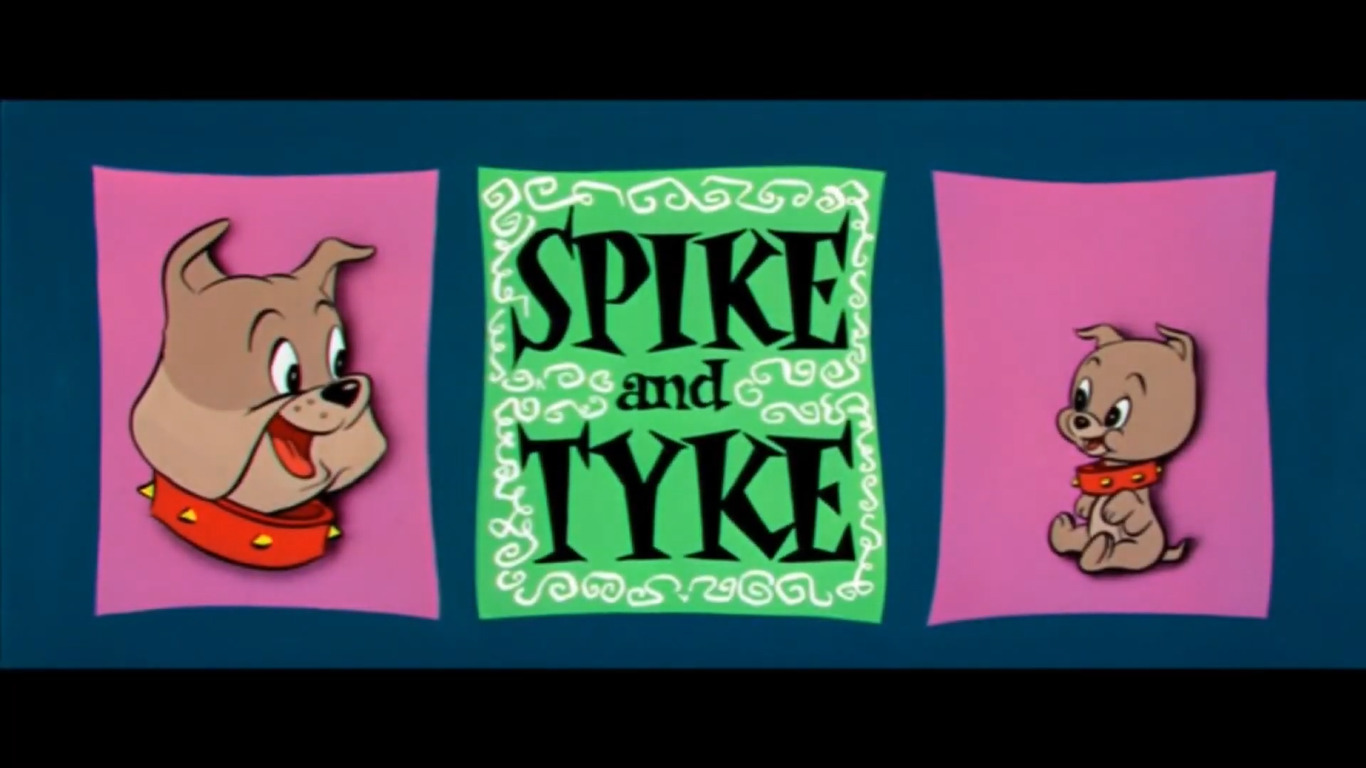By JOHN BILLINGER
Tiger Media Network
The “Tom and Jerry” franchise has been going on for 83 strong years since its creation by Bill Hanna and Joseph Barbera for MGM as theatrical shorts. In that time, there have been many new installments to keep it going past the original shorts. Almost all of these include the words “Tom” and “Jerry” at some point in the title. However, there was one installment that didn’t, and in their place were “Spike and Tyke.”
If you’ve seen any of the classic shorts, there’s a good chance that you’re familiar with this father-and-son duo. Spike was a bulldog that first appeared in 1942’s T&J short “Dog Trouble,” while his son Tyke first appeared in 1949’s “Love That Pup.” While their respective roles in the shorts are switched up occasionally, they’re usually an enemy of Tom and an ally (sometimes unknowingly) of Jerry. Of the two characters, only Spike talked, originally voiced by Billy Bletcher, and later on by Daws Butler. Evidently, they must’ve been somewhat popular amongst audiences as in the mid-1950s they were given a short-lived series of theatrical shorts.
Produced in CinemaScope and directed by Bill Hanna and Joseph Barbera (who at this point were in full charge of the MGM animation studio unit after former head Fred Quimby retired), the “Spike and Tyke” shorts were produced towards the end of its parent series original run. As such, it reflects the animation style of the late-period T&J shorts. Despite the fact Spike and his son originated in the prior series, neither Tom nor Jerry appear in these shorts. However, other prior characters appear such as the pet owners George & Joan, and Tom’s alley cat friends. Only two shorts were made. The first was titled “Give and Tyke” and was released in 1957. The latter one was titled “Scat Cats” and was released the same year.
“Give and Tyke” is about a stray dog (also voiced by Daws Butler, using just about the same voice he’d use for Yogi Bear) who finds out the pound is going to round up dogs that do not have a registered collar, so he decides to steal Tyke’s. This inevitably puts him at odds with Spike. In “Scat Cats,” the dog’s owners go out for the weekend, which inadvertently invites the alley cats to have a party at the house. Of course, they’re going to be in serious trouble with the dogs.
Anyway, both shorts are not that special. As stated earlier, the animation style is reflective of the T&J’s being produced at this time. This means the animation is good, but it’s not like you wouldn’t see it in the other show. Although some of the backgrounds seen in “Give and Tyke” have a style similar to what would’ve been seen in a UPA short from the time. That does help it stand out from its parent series. The slapstick and timing are also good, but again you’d get the same thing from T&J. Lastly, Spike and Tyke just don’t work as well in the leads in my opinion. They work far better as an opposing force rather than as protagonists. Perhaps had they made more than just the two shorts the series would’ve developed over time, but unfortunately the then-current climate of theatrical shorts wasn’t on its side.
During the 1950s, the big movie studios were trying to compete with television, which was lowering box office attendance at the time. One way MGM tried to combat this was to re-release older cartoon shorts from its backlog. When it was discovered that a re-released short could make just as much money as making a new one, MGM decided to cut the cost and shut down its animation studio in 1957. Not only did this bring an end to the classic era of Tom and Jerry that had lasted since 1940, but it also led to the end of the “Spike and Tyke” series in only its first year. In response to this, Bill Hanna and Joseph Barbera founded their own studio Hanna-Barbera, which focused on the production of television animated shows. One of their first shows was called “Augie Doggie and Doggie Daddy,” which focused on a father and son dog duo. Sound familiar? Later on, they’d produce “Yogi Bear,” “The Flintstones,” “The Jetsons,” “Scooby Doo” and a whole bunch of other shows.
Of course, this wasn’t the end of Tom and Jerry. MGM went back into the theatrical shorts game in the 1960s. But rather than reopening their animation unit, they commissioned other studios to make them instead — which led to both the Gene Deitch and Chuck Jones eras of 1961 to 1967. After that, Tom and Jerry mostly continued in various series made for television, with an occasional full-length movie here and there (mostly direct-to-video). As for Spike and Tyke, they remained mostly absent from the 1960s T&J’s but returned in newer entries starting in the 1970s and continuing on to today. However, it does not appear they’ll be receiving their own spin-off anytime soon.
Overall, the two shorts we did get from them are just OK if not unremarkable, unless you take into account their place in Hanna-Barbera history. They pretty much fell into obscurity, as for years I’ve never even heard of them until recently. If you’re a diehard Tom and Jerry fan, you should probably give it a look, but for anyone else, I’d say they’re not missing much.
John Billinger is an FHSU student in the Informatics Department and an avid movie buff.

